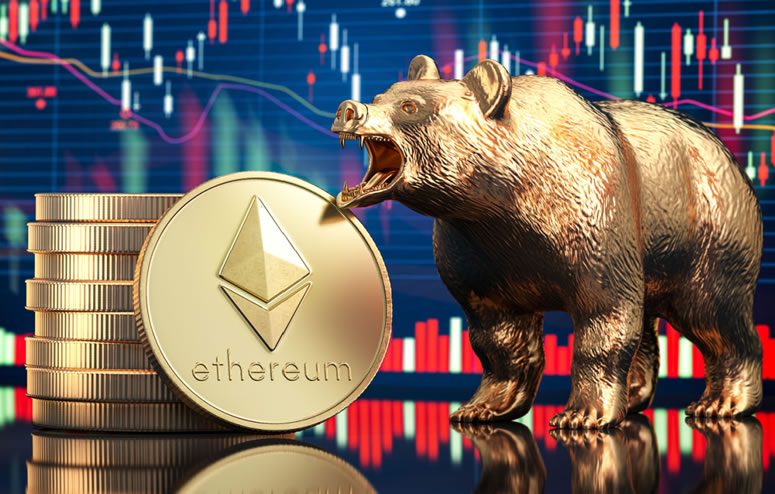Ethereum Bears Are Keeping ETH Price Below $2k
Weak productivity metrics and declining usage of TVL and DApps put Ethereum bears in a better position to keep ETH prices below $2,000.

The price of Ether (ETH) faced strong resistance at $1,920 after gaining 17.5% between June 15 and June 22. Many factors contributed to the extreme end, including the worsening economic situation, the demanding cryptocurrency ecosystem and vulnerable applications (DApps) on the Ethereum network.
ETH Price Faces Headwinds
On June 26, a federal judge denied Binance's motion that could prevent the US Securities and Exchange Commission (SEC) from issuing public statements related to the case. In addition, in its mid-year perspective, the HSBC Asset Management report warned of an economic slowdown in the United States in the fourth quarter, followed by "a year of contraction and recession in Europe in 2024". . The report also noted that "industrial losses have begun to rise."
Finally, the chief economist of the International Monetary Fund, Gita Gopinath, told CNBC on June 27 that central bank officials should "continue to be assertive" by keeping interest rates low for longer than it was expected. Requires Ethereum network, less gas costs
The use of DApps on the Ethereum network has picked up steam as gas costs have dropped by 60%. Notably, the seven-day trading price fell to $3.7 on June 26 from $9 four weeks ago. Active DApp addresses fell 27% over the same period.
Most of the decline was centered on Uniswap and MetaMask Swap, while several non-fungible token (NFT) markets saw increases in their unique service wallets (UAW).
Despite the Uniswap NFT Aggregator's performance not working, the company faced a great reception of users in OpenSea, Blur, Manifold, LooksRare, and Unick. Another thing, however, the Total Locked Value (TVL) - measuring deposits locked in Ethereum smart contracts - hit its lowest level since August 2020. The indicator fell 6.9% between April 28 and June 28 to 13,9 million ETH, according to DéfiLlama. A rising ETH price does not support the market So how are professional traders positioned for the next ETH price move? Let's take a look at Ether futures to determine the possibility of ETH/USD breaking above the $1,920 resistance. The fourth ETH futures contract is a whale utility and an arbitral tribunal. However, these contracts take a few months and often trade with a small amount to see the market, because they require additional payments to restore the settlement. Therefore, in a healthy market, ETH futures should trade at a 5-10% profit per year, a situation known as contango.
As the future premium - known as the basis indicator - professional traders avoid leveraged long positions (bullish bets). Despite the slight increase to 3%, the metric is still far from the 5% neutral threshold. To exclude external factors that can affect the future of Ether alone, it is worth analyzing the ETH options market. The 25% delta skew indicator compares similar call (call) and put (sell) options, and will turn positive when panic prevails because defensive options are higher than buy options.
The indicator is unlikely to go above 8% if traders fear a crash in the price of Ether. In contrast, overall happiness shows a negative trend of 8%. As mentioned above, the delta bias has been trading optimistically since June 22 but has not been able to sustain it for a long time. Now, a negative 2% indicates a positive trend for options. Resistance below $2,000 remains formidable
Judging by the metrics of ETH and the decrease in the use of TVL and DApps, the bear is in a better position to defend the stability of $ 1,920. In addition, the worsening macro situation and cryptocurrency regulatory news support pessimism for risky assets, including Ether. This does not mean that Ether will test $1,750, but it presents a big problem for ETH bulls after it failed to break the $1,920 level three times between June 21 and June 25.
Therefore, at least in the short term, bears have a good chance of defending this important price level.





